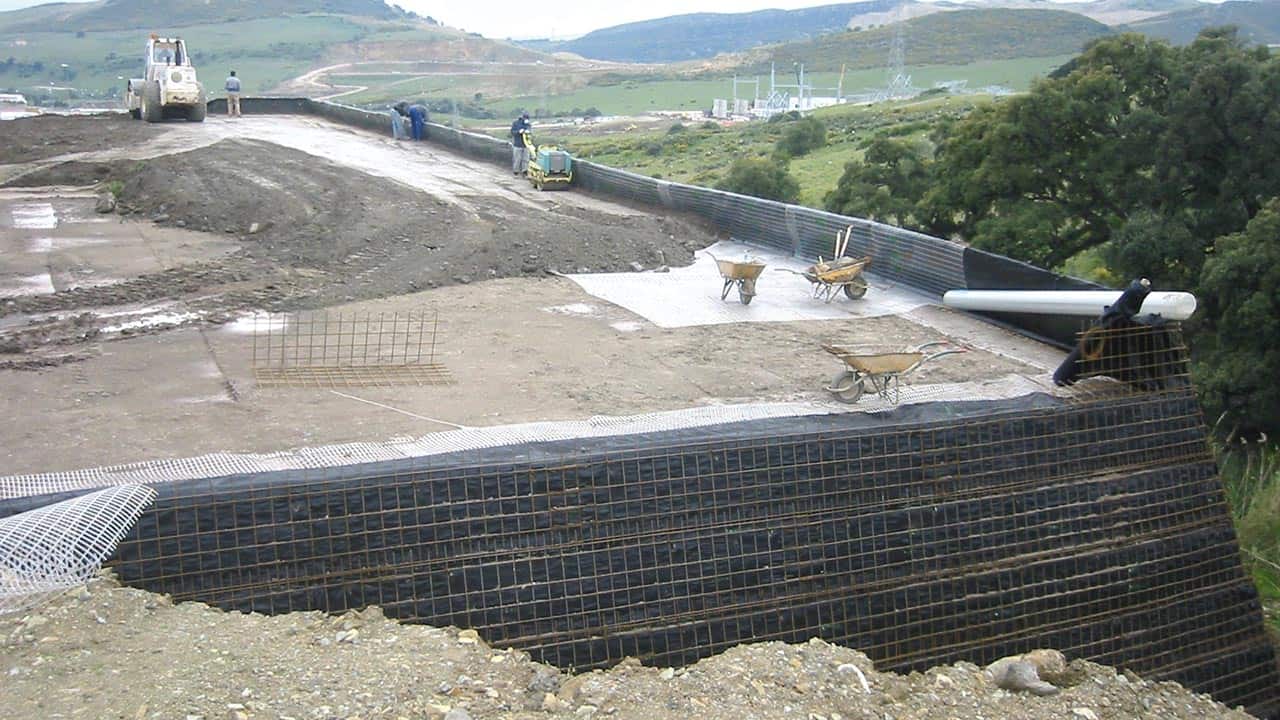|
What is a Geosynthetic Reinforced Foundation?
Generally, ground with soft soil causes difficulties during the construction of large structures due to the insufficient bearing capacity of the soil, which is associated with excessive settlement of the structure. Ground improvement and replacement using good-quality soils are commonly employed to increase the bearing capacity of soft soils at certain locations. However, these processes are expensive and time consuming. Moreover, these methods can restrict workability during construction. In urban housing, the use of cement to improve the ground is particularly problematic because of increased construction costs. When replacing existing soft soils with good quality soils, temporary structures must be installed, such as sheet piles, retaining walls, and struts, which cause difficulties in building the main structure. Therefore, we focus on using geosynthetics to reinforce the ground to reduce ground deformation and to increase the bearing capacity of the ground. |
Geosynthetic reinforcement consists of fibrous materials that can withstand tensile forces acting upon the soils from the upper surcharge. In practice, geosynthetics are installed under building foundations. The edges of the reinforcing members are affixed to the ground by hooks to increase the bearing capacity. Generally, the tension of the reinforcing member determines the increased bearing capacity of the ground. However, the reinforcing effect with geosynthetics is neither a direct process of ground improvement nor a process of increasing ground strength. High strength geosynthetics can be used as basal reinforcement for the construction of embankments over soft compressible foundation soils. Geosynthetic layers are placed horizontally with closer spacing for the construction of mechanically stabilized reinforced soil walls, steep slopes over foundation soil. The geosynthetics can also be used below the footings of rigid walls rested over poor foundation soils. |
- Welcome
- PORTFOLIO
-
Services
-
Geotechnical Engineering
>
- Geotechnical Explorations >
-
FOUNDATION ENGINEERING
>
- GEOLOGICAL ENGINEERING >
- Septic Engineering >
- PHASE I-III ASSESSMENTS
- ENVIRONMENTAL ASSESSMENTS >
- Site-Specific Seismic Evaluations >
- BUILDING ASSESSMENTS >
- Retaining Walls
- Shoring
- Pin Piles
- Gabion wall
- HELICAL PIER
- Structural Retrofitting
- MANTA RAY ANCHORS
- GEOPHYSICS
- PAVEMENTS / PUBLIC WORKS >
- SOFTWARE >
-
Geotechnical Engineering
>
- Contact Us
- Employment
- Library
- Florida Geo Services
- Blog
- Landing 2024
- Welcome
- PORTFOLIO
-
Services
-
Geotechnical Engineering
>
- Geotechnical Explorations >
-
FOUNDATION ENGINEERING
>
- GEOLOGICAL ENGINEERING >
- Septic Engineering >
- PHASE I-III ASSESSMENTS
- ENVIRONMENTAL ASSESSMENTS >
- Site-Specific Seismic Evaluations >
- BUILDING ASSESSMENTS >
- Retaining Walls
- Shoring
- Pin Piles
- Gabion wall
- HELICAL PIER
- Structural Retrofitting
- MANTA RAY ANCHORS
- GEOPHYSICS
- PAVEMENTS / PUBLIC WORKS >
- SOFTWARE >
-
Geotechnical Engineering
>
- Contact Us
- Employment
- Library
- Florida Geo Services
- Blog
- Landing 2024



